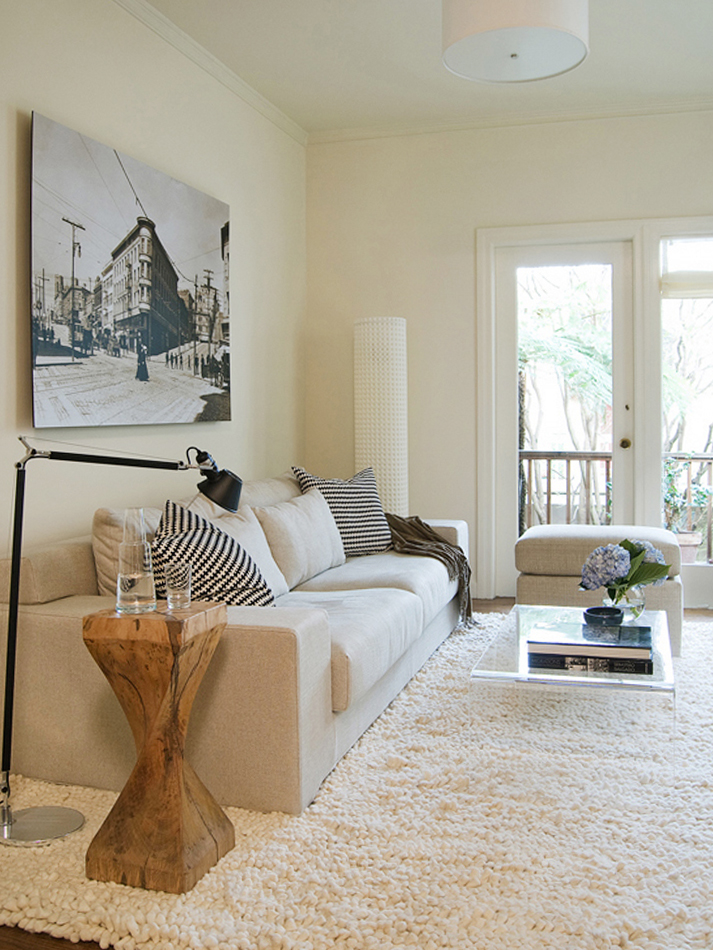

The addition of a glass wall surrounding the TV creates more light and space. The seating furniture faces each other while also facing the TV, making it a good space for entertaining or relaxing. This problem has been addressed by using a corner sofa at one end of the room and a matching chair at the other end. This living room is large in terms of square footage, but the shape of it is a narrow rectangle that can make it hard to furnish. One sofa faces a small coffee table, which has an upholstered cube to one side that could be used as a stool to sit on or a footrest. The furniture has been kept minimal to ensure the living room remains open and airy. This is a very small living room that has been made to feel bigger through the use of a glass wall into the next room, creating more light and longer sightlines to give the illusion of more space. Two log stumps have been used for coffee tables in front of a sofa that faces two minimalist-style chairs. This awkward room shape has been remedied by using small furniture items to help the space look more proportional. This space is very long and narrow, which has been made even more difficult by a fireplace that prevents any furniture from being placed against that wall. This actually works really well to create a cozy and safe feel for anyone using the sofa. The sloping ceiling at one end of this living room has made for an awkward space for furniture arranging.Ī sloped ceiling will prevent you from positioning any tall pieces of furniture against the wall, but you can overcome this issue by placing a sofa under the sloped ceiling. The tables should be approximately the same height as the arm of the chair or sofa they're next to.Check out these awkwardly shaped living room layouts for help with arranging furniture in your own home. The key is to have enough surface space without overcrowding the room. Try to have one on either side of the sofa, and between pairs of chairs. Everyone should be able to comfortably set down a drink without having to get up and walk over to a table. The number you need will depend on how much seating you have. Side Tables - Side tables tend to be an afterthought, but they're important.At the same time be sure to leave enough leg room between seats and tables: 14 to 18 inches should do the trick. People sitting around them should be able to lean over to put down or pick up a drink without having to get up from their seat. If you don't want to use a coffee table you can try using a couple of smaller tables or benches to achieve the same look. The length of the table should also be roughly one half to two thirds the length of the sofa. If you choose to use, one remember that the height should be slightly lower than the seat height of the sofa and chairs around it. Coffee Table - Coffee tables are practical pieces that are often found in the center of conversation areas.If space doesn't allow it, make sure that at least the front legs of any large upholstered pieces are on the rug. Remember that all of the furniture should be able to comfortably sit on the carpet. Rug – Using area rugs is a great way to define seating areas, but the number one mistake people make in the living room is using an area rug that's too small.Try putting the sofa and chairs in a few different spots and see what works best visually and in terms of leaving space to accommodate traffic flow. Sketch out the room on a piece of graph paper using all the appropriate measurements. You don't want them to be too big or too small, so it's best if you draw up a floor plan ahead of time.

The most important thing to do is measure the space before buying any of these pieces. Sofa and Chairs - These are often the big-ticket items, so it's important that they suit the space.The Spruce Home Improvement Review Board.


 0 kommentar(er)
0 kommentar(er)
